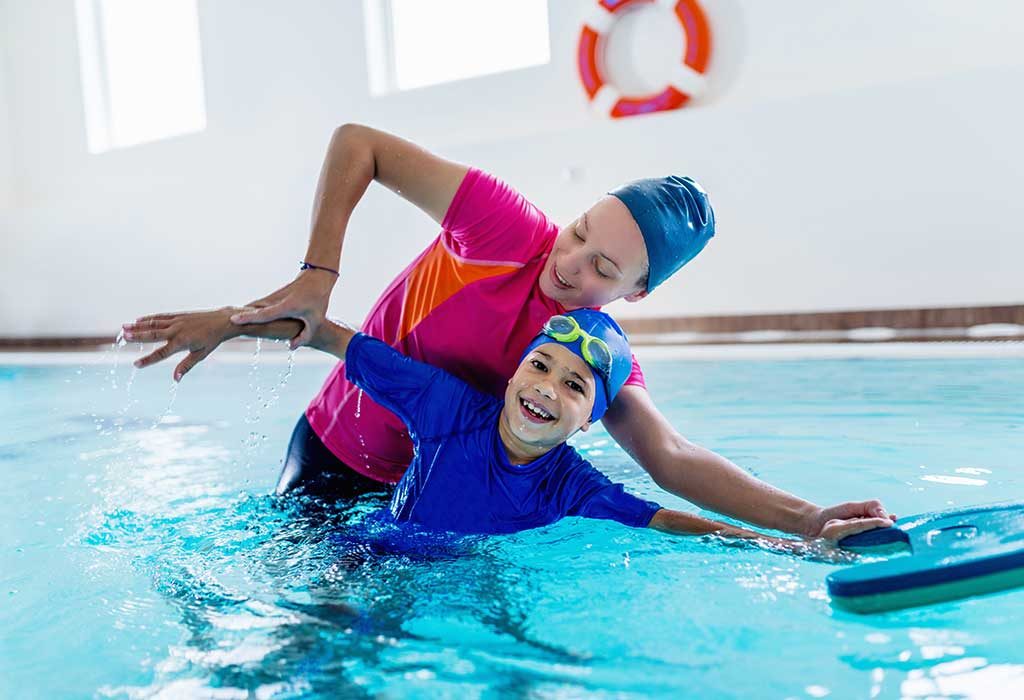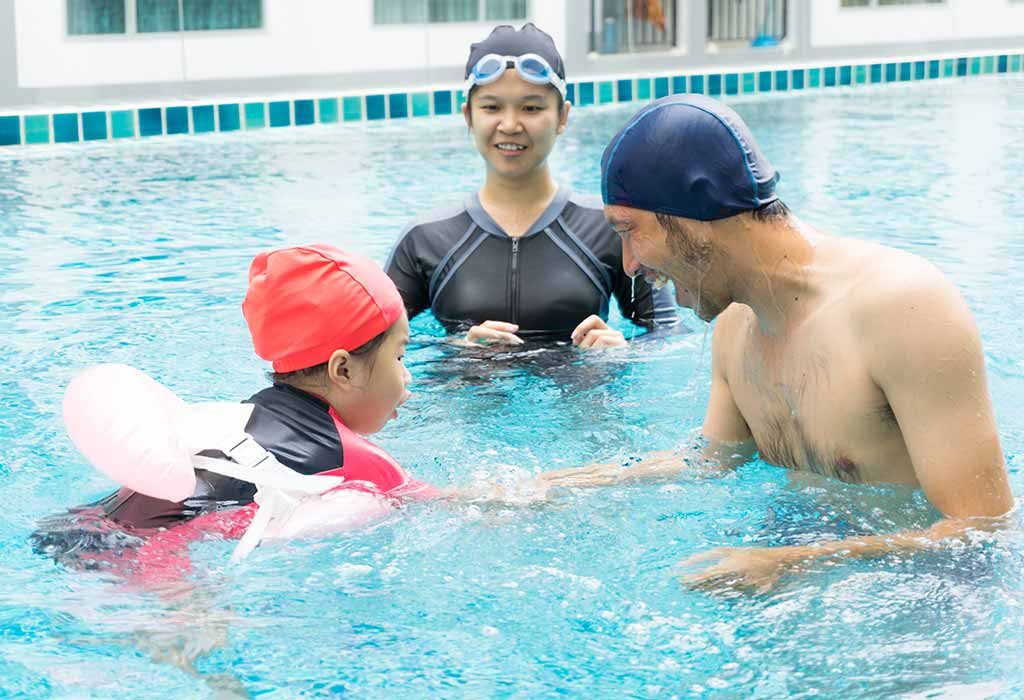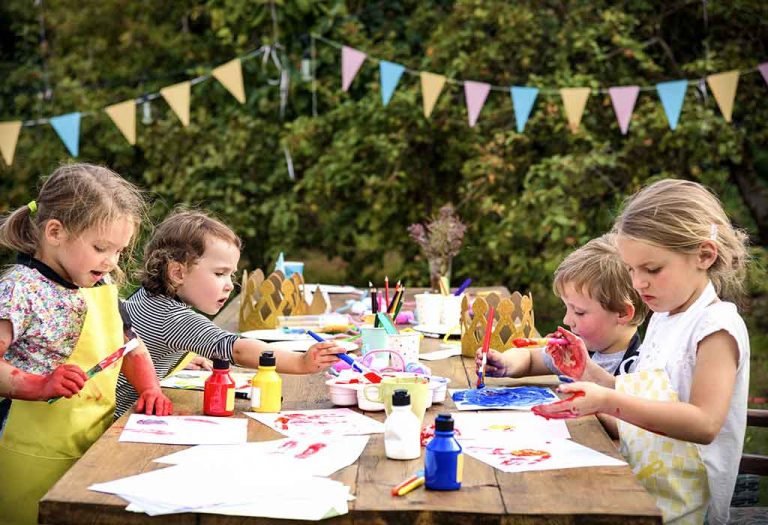Swimming for Kids – Benefits, Risks and Precautions
Swimming is a fun activity and also an important life skill that can come in handy. Besides being a great outdoor sport, it has plenty of benefits for children. Get to know the advantages, risks, and precautions related to swimming to make an informed decision on when and how to introduce your child to this cool activity.
Benefits of Swimming for Your Child
A great way to cool off during summer, swimming is also the only sport that might be able to save your child’s life. Besides this, here are some other benefits that swimming has to offer:
- Good for Physical Health: It is a great way of getting kids some physical exercise in an era of electronic gadgets. Playing in the water is always appealing to children and swimming combines fun and learning. It also improves cardiac and respiratory health besides increasing stamina and enhancing balance and posture.
- Essential for Safety: Drowning is known to be the second common cause of deaths in children aged under 14. Knowing how to stay safe if one falls into the water accidentally is essential. Since swimming is a skill that stays with your child all life long, it is definitely a worthy pursuit.
- Enhance Emotional Well-Being: Swimming is also beneficial to your child’s mental and emotional health. The natural buoyancy of water has been found to ease stress and improve an individual’s mood. It can help combat depression when pursued on a regular basis.
- Teaches Teamwork: Besides helping your child make new friends, it even fosters team spirit without compromising on individuality. Learning together and competing against one another in a sportive manner teaches a child valuable life lessons.
- Better Co-ordination: There has to be a good deal of synchronised movement of the arms, legs, and entire body not to mention the breathing pattern. Mastering this will also give your child a boost of self-confidence.
Cons of Swimming for Children
Most of the time, you get to hear about the pros of swimming, and it is easy to believe there are no cons to this activity. However, every coin has two sides. There are some things you need to watch out for when getting your child to learn swimming.
- Summers are ideal for swimming, but if you live in a region where the weather is mostly cool, the cold water in the pool can lead to cold and cough in your child. Heated pools might be a solution, but are not easily accessible.
- Chemicals used to cleanse the pool, like chlorine, produces toxic gases, which when breathed in can lead to asthma in some.
- A swimming pool is also a transmitter of contagious diseases since a good number of children can be found in one at the same time.
How to Teach Kids to Swim
There is no single method of teaching swimming to children. The approach to be used will differ depending on the individual temperament of the child. Here is how you can try teaching a child to swim in steps:

- If being in the water is a new experience for your child, introduce him to the pool first by helping him approach the water gradually.
- Be sure that your child is aware of all the rules of the pool as well as where to change and shower.
- Demonstrate on dry land the motions used in swimming and prepare your child for the different sensations he is sure to encounter.
- Make the experience fun by asking your child to play hide-and-seek with you in the water or by using some floater accessories.
- Show your child how to go under the water by holding his breath and to make bubbles.
- Start off your child with a bit of kicking as he holds on to the railing inside the pool or by holding your hand.
- Slowly start taking your child underwater while asking him to hold his breath.
- Then, start your kid off with safety vests which can keep him afloat.
- Tell your child to ensure that his head stays above the water even when he is paddling and kicking
- Once your child is able to swim from one place to another, you can then teach him more to hone his skills in the water.
Constant supervision is required even when your child is comfortable swimming as it takes only a second for things to go wrong.
Precautions to Be Taken when Your Child Goes for Swimming
As far as children are concerned, you can never have too many precautions or safety measures in place. And swimming is no exception. While going swimming ensure that your child:
- Never goes into the pool alone. Adult supervision is necessary at all times.
- Adheres to the rules at all times.
- Has donned the right type of swimming gear. Swimwear, goggles, earplugs are just some examples.
- Knows that swimming in a pool is extremely different from swimming in an ocean or a river. The river bed will not be flat and smooth like the pool and poses the danger of jutting rocks that can be sharp.

Selecting a Swimming Class for Your Child
It is important to be careful when choosing a swimming class for your child. If an instructor is not able to establish a rapport with your child and could not earn his trust, the road ahead will be extremely difficult. Keep the following in mind while looking for a swimming class for your child:
- Ensure that the classes are held according to the skills your child has to learn. Otherwise, your child might end up learning nothing significant.
- If you have a young child with a fear of water, check to see if they allow a parent to be in the pool during the class.
- Find out about how frequently the pool is cleaned and the kind of chemicals used to clean it.
- Check out the experience and the qualifications of all instructors who will be teaching your child.
- Choose a class with a limited number of children as only then will your child get the required individual attention from the instructor.
- See if you can first sit on a couple of the instructor’s classes or get a couple of trial classes to assess how the instructor manages the sessions.
It is quite evident that the pros of swimming outweigh the cons by far. By undertaking adequate safety precautions and opting for a reputed swim school, you will be able to help your child master this essential life-saving skill with ease. Introducing your child to swimming early on can make a significant difference in his attitude towards the sport and hopefully make him a fervent follower.
Disclaimer: This information is just a guide and not a substitute for medical advice from a qualified professional.
Also Read: Best Games for Kids
















